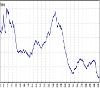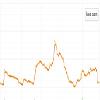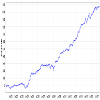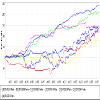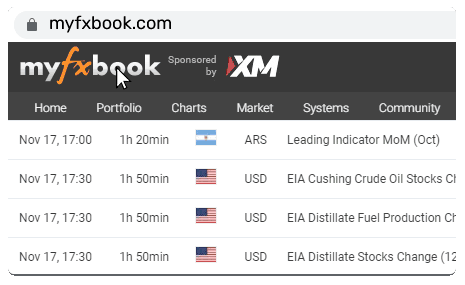- घर
- कम्युनिटी
- ट्रेडींग सिस्टम
- KeltnerPRO - Jared
Advertisement
KeltnerPRO - Jared (के जरिए keltnerpro )
| लाभ : | +5645.75% |
| गिरावट | 58.74% |
| पीप्स: | 4744.8 |
| ट्रेडों | 1003 |
| जीत: |
|
| हार: |
|
| प्रकार: | असली |
| लीवरेज: | 1:100 |
| ट्रैडिंग: | अनजान |
Edit Your Comment
KeltnerPRO - Jared चर्चा करें
तबसे मेंबर है Jul 09, 2014
47 पोस्टों
Oct 17, 2016 at 19:55
(एडिट हो रहा है Oct 17, 2016 at 19:57)
तबसे मेंबर है Jul 09, 2014
47 पोस्टों
InsiderBCN posted:
Anyone can share their experience with that system?
Two systems with history...
Im writing about my experiences, so yours can be different ;)
तबसे मेंबर है May 10, 2013
52 पोस्टों
Nov 08, 2016 at 12:06
तबसे मेंबर है May 10, 2013
52 पोस्टों
InsiderBCN posted:
Anyone can share their experience with that system?
Hi you can search in myfxbook with key word "Keltner" and you will find several cases
(big part of them with Keltner Pro).
My personal experience is positive with around 43% in 9 months.
Keltner Pro is a key part of my forex strategy and I'm happy with it.
The DD is increasing and trading frequency is reducing (I don't like that).
Having a precise idea about when to stop the EA I don't care and in the worst
case I will temporary stop. Indeedly on October 7 very bad situation with unexpected
loss.
Cheers
Find an edge and trade it
Nov 29, 2016 at 08:09
तबसे मेंबर है May 25, 2013
3 पोस्टों
By go through history test with tds, I find the 2 critical elements to make this ea successful are:
1. its winning rate is around 48%-53%
2. its rr ratio is about 1.4-1.6
now here is my question, the winning rate will be lower if we setup maxopenposition=1(usually 5% lower than we setup maxopenposition=3), so it looks like the second and third trades average up the overall winning rate. Is that possible we can get higher winning rate if we skip the first trade and just open second and third trades?
1. its winning rate is around 48%-53%
2. its rr ratio is about 1.4-1.6
now here is my question, the winning rate will be lower if we setup maxopenposition=1(usually 5% lower than we setup maxopenposition=3), so it looks like the second and third trades average up the overall winning rate. Is that possible we can get higher winning rate if we skip the first trade and just open second and third trades?
तबसे मेंबर है Jul 09, 2014
47 पोस्टों
Dec 12, 2016 at 12:23
तबसे मेंबर है Jul 09, 2014
47 पोस्टों
Im writing about my experiences, so yours can be different ;)
तबसे मेंबर है Jan 24, 2017
104 पोस्टों
Feb 09, 2017 at 07:55
तबसे मेंबर है Jan 24, 2017
104 पोस्टों
keltnerpro posted:
Because I have plenty of other accounts not shown, this is my re-investment account used for proof and used to build up a nest egg
for the future.
What is the minimun deposit recomended for this EA...?... And broker,,,?...
Thanks.
तबसे मेंबर है Jun 03, 2011
13 पोस्टों
Feb 21, 2017 at 18:51
तबसे मेंबर है Jun 03, 2011
13 पोस्टों
Guys, This account is a demo...KeltnerPro is duping his viewers. He's NEVER made a withdraw EVER! If you REALLY want to know if his account is real have him make a -$20 withdraw from his $300k+ account.
Prove me wrong KetlerPro!
Prove me wrong KetlerPro!
तबसे मेंबर है Jan 02, 2015
13 पोस्टों
Apr 13, 2017 at 06:48
तबसे मेंबर है Jan 02, 2015
13 पोस्टों
Gebbe posted:besttools posted:
Drawdown: 58.74% is big risk...
And you Withdrawals: $0.00 !!!!!!
you use free demo bonus deposit !!!!!!!!! LOL
big return as well.
High risk strategy is thousand times better than low risk.
You have to just withdraw capital (50%) every year.
Plan Your Trade. Trade Your Plan.
तबसे मेंबर है Mar 12, 2013
4 पोस्टों
तबसे मेंबर है Feb 17, 2017
12 पोस्टों
Apr 28, 2017 at 11:10
तबसे मेंबर है Feb 17, 2017
12 पोस्टों
the strategy is so volatility
I think Keltnerpro would confuse on the EA strategy as well
I think Keltnerpro would confuse on the EA strategy as well
तबसे मेंबर है Aug 25, 2012
32 पोस्टों
Jun 27, 2017 at 06:29
तबसे मेंबर है Aug 25, 2012
32 पोस्टों
Issues of volatility can be ironed out by implementing 3 simple things:
1) Only allowing 1 trade per pair at a time
2) Keeping to fixed lots and only increase lots (manually) at new equity highs
3) Adding more currency pairs and at different time frames
To continue making this EA work smoothly (as is the case for me) - I've added/modified the following pairs/timeframes (they've all been backtested):
AUDUSD M5,
EURGBP H1,
EURUSD M15, EURUSD M30,
GBPUSD M5, GBPUSD M15,
NZDUSD M15,
USDCHF M5, USDCHF M15
USDJPY M15
Lot sizing will need to be re-adjusted as well as there are duplicate pairs (i.e. EURUSD, GBPUSD, and USDCHF) plus they all perform at different frequencies and profitabilities, historically speaking (this is optional).
For a $10k start balance, lot sizes could be:
AUDUSD = 0.12
EURGBP = 0.12
EURUSD = 0.02 (0.02*2=0.04)
GBPUSD = 0.02 (0.02*2=0.04)
NZDUSD = 0.12
USDCHF = 0.02 (0.02*2=0.04)
USDJPY = 0.12
Of course, one could just stick to the standard fixed 0.01 lot per $1k rule to keep things simple.
*Note: there's probably a few more timeframes / currency pairs that could work to create a great combo (i.e. H1 timeframe, SGD currency pair). You'll need to perform your own backtests to check if they are satisfactory to your preferences.
Here's a portfolio backtest (max drawdown hovers around ~10%):
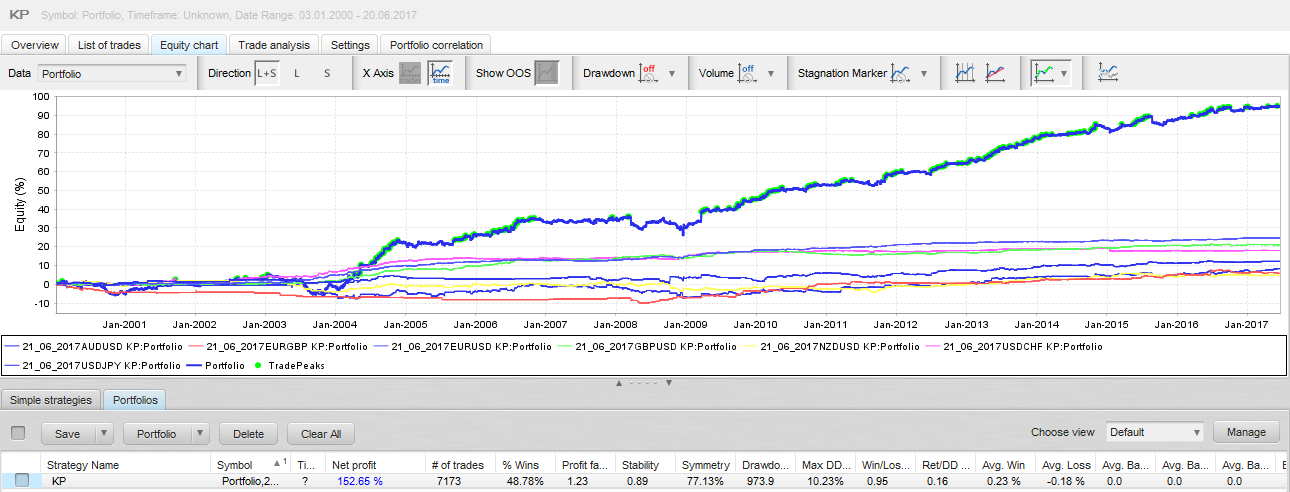


1) Only allowing 1 trade per pair at a time
2) Keeping to fixed lots and only increase lots (manually) at new equity highs
3) Adding more currency pairs and at different time frames
To continue making this EA work smoothly (as is the case for me) - I've added/modified the following pairs/timeframes (they've all been backtested):
AUDUSD M5,
EURGBP H1,
EURUSD M15, EURUSD M30,
GBPUSD M5, GBPUSD M15,
NZDUSD M15,
USDCHF M5, USDCHF M15
USDJPY M15
Lot sizing will need to be re-adjusted as well as there are duplicate pairs (i.e. EURUSD, GBPUSD, and USDCHF) plus they all perform at different frequencies and profitabilities, historically speaking (this is optional).
For a $10k start balance, lot sizes could be:
AUDUSD = 0.12
EURGBP = 0.12
EURUSD = 0.02 (0.02*2=0.04)
GBPUSD = 0.02 (0.02*2=0.04)
NZDUSD = 0.12
USDCHF = 0.02 (0.02*2=0.04)
USDJPY = 0.12
Of course, one could just stick to the standard fixed 0.01 lot per $1k rule to keep things simple.
*Note: there's probably a few more timeframes / currency pairs that could work to create a great combo (i.e. H1 timeframe, SGD currency pair). You'll need to perform your own backtests to check if they are satisfactory to your preferences.
Here's a portfolio backtest (max drawdown hovers around ~10%):



- TimeWarp to 2030 AD -
तबसे मेंबर है Dec 04, 2010
1447 पोस्टों
Jul 06, 2017 at 09:46
तबसे मेंबर है Dec 04, 2010
1447 पोस्टों
vocasla posted:
Issues of volatility can be ironed out by implementing 3 simple things:
1) Only allowing 1 trade per pair at a time
2) Keeping to fixed lots and only increase lots (manually) at new equity highs
3) Adding more currency pairs and at different time frames
To continue making this EA work smoothly (as is the case for me) - I've added/modified the following pairs/timeframes (they've all been backtested):
AUDUSD M5,
EURGBP H1,
EURUSD M15, EURUSD M30,
GBPUSD M5, GBPUSD M15,
NZDUSD M15,
USDCHF M5, USDCHF M15
USDJPY M15
Lot sizing will need to be re-adjusted as well as there are duplicate pairs (i.e. EURUSD, GBPUSD, and USDCHF) plus they all perform at different frequencies and profitabilities, historically speaking (this is optional).
For a $10k start balance, lot sizes could be:
AUDUSD = 0.12
EURGBP = 0.12
EURUSD = 0.02 (0.02*2=0.04)
GBPUSD = 0.02 (0.02*2=0.04)
NZDUSD = 0.12
USDCHF = 0.02 (0.02*2=0.04)
USDJPY = 0.12
Of course, one could just stick to the standard fixed 0.01 lot per $1k rule to keep things simple.
*Note: there's probably a few more timeframes / currency pairs that could work to create a great combo (i.e. H1 timeframe, SGD currency pair). You'll need to perform your own backtests to check if they are satisfactory to your preferences.
Here's a portfolio backtest (max drawdown hovers around ~10%):
https://www.myfxbook.com/files/vocasla/KP_2017__portfolio.png
Am I reading these results right, 152% return over a 16 year period with 10% max drawdown. This seems like a very low return for such a long backtest?
तबसे मेंबर है May 20, 2011
694 पोस्टों
Jul 06, 2017 at 19:21
तबसे मेंबर है May 20, 2011
694 पोस्टों
aeronthomas posted:i dunno seems pretty good to me. Not many investments can achieve such great of a return with such low risk,vocasla posted:
Issues of volatility can be ironed out by implementing 3 simple things:
1) Only allowing 1 trade per pair at a time
2) Keeping to fixed lots and only increase lots (manually) at new equity highs
3) Adding more currency pairs and at different time frames
To continue making this EA work smoothly (as is the case for me) - I've added/modified the following pairs/timeframes (they've all been backtested):
AUDUSD M5,
EURGBP H1,
EURUSD M15, EURUSD M30,
GBPUSD M5, GBPUSD M15,
NZDUSD M15,
USDCHF M5, USDCHF M15
USDJPY M15
Lot sizing will need to be re-adjusted as well as there are duplicate pairs (i.e. EURUSD, GBPUSD, and USDCHF) plus they all perform at different frequencies and profitabilities, historically speaking (this is optional).
For a $10k start balance, lot sizes could be:
AUDUSD = 0.12
EURGBP = 0.12
EURUSD = 0.02 (0.02*2=0.04)
GBPUSD = 0.02 (0.02*2=0.04)
NZDUSD = 0.12
USDCHF = 0.02 (0.02*2=0.04)
USDJPY = 0.12
Of course, one could just stick to the standard fixed 0.01 lot per $1k rule to keep things simple.
*Note: there's probably a few more timeframes / currency pairs that could work to create a great combo (i.e. H1 timeframe, SGD currency pair). You'll need to perform your own backtests to check if they are satisfactory to your preferences.
Here's a portfolio backtest (max drawdown hovers around ~10%):
https://www.myfxbook.com/files/vocasla/KP_2017__portfolio.png
Am I reading these results right, 152% return over a 16 year period with 10% max drawdown. This seems like a very low return for such a long backtest?
तबसे मेंबर है Aug 25, 2012
32 पोस्टों
Jul 07, 2017 at 05:57
तबसे मेंबर है Aug 25, 2012
32 पोस्टों
aeronthomas posted:
Am I reading these results right, 152% return over a 16 year period with 10% max drawdown. This seems like a very low return for such a long backtest?
Leverage was set to fixed lot in order to show the underlying performance and minimize visual bias i.e. observe that the Stability factor = 0.89. With auto-lot function, the net gain in percent would be higher than that, with greater drawdown. I didn't show here the compound annual growth rate (CAGR).
Also note, I didn't do any analysis of winrate changes over time, either. So the statistical analysis above is fairly limited.
I merely wanted to show stability over time up to the present.
- TimeWarp to 2030 AD -
तबसे मेंबर है Dec 04, 2010
1447 पोस्टों
Jul 12, 2017 at 11:09
तबसे मेंबर है Dec 04, 2010
1447 पोस्टों
vocasla posted:Okay that explains it. Yes with compounding and increasing lot sizes it would be very interesting to see results.aeronthomas posted:
Am I reading these results right, 152% return over a 16 year period with 10% max drawdown. This seems like a very low return for such a long backtest?
Leverage was set to fixed lot in order to show the underlying performance and minimize visual bias i.e. observe that the Stability factor = 0.89. With auto-lot function, the net gain in percent would be higher than that, with greater drawdown. I didn't show here the compound annual growth rate (CAGR).
Also note, I didn't do any analysis of winrate changes over time, either. So the statistical analysis above is fairly limited.
I merely wanted to show stability over time up to the present.
तबसे मेंबर है Aug 25, 2012
32 पोस्टों
Jul 18, 2017 at 06:57
तबसे मेंबर है Aug 25, 2012
32 पोस्टों
Here's a more comprehensive list of pairs:
AUDCHF M30,
AUDNZD M5,
AUDUSD M5,
EURGBP H1,
EURUSD M15, EURUSD M30,
GBPUSD M5, GBPUSD M15, GBPUSD M30, GBPUSD H1
GBPSGD M15,
NZDUSD M15,
USDCHF M5, USDCHF M15
USDJPY M15, USDJPY M30
AUDCHF M30,
AUDNZD M5,
AUDUSD M5,
EURGBP H1,
EURUSD M15, EURUSD M30,
GBPUSD M5, GBPUSD M15, GBPUSD M30, GBPUSD H1
GBPSGD M15,
NZDUSD M15,
USDCHF M5, USDCHF M15
USDJPY M15, USDJPY M30
- TimeWarp to 2030 AD -
तबसे मेंबर है Jul 09, 2014
47 पोस्टों
Jul 26, 2017 at 14:36
तबसे मेंबर है Jul 09, 2014
47 पोस्टों
This is the right picture of this EA: https://www.myfxbook.com/members/forexgermany/keltnerpro/983876
Thanks to the trader who is putting all results online...
Thanks to the trader who is putting all results online...
Im writing about my experiences, so yours can be different ;)
तबसे मेंबर है Nov 16, 2012
18 पोस्टों
Jul 28, 2017 at 19:49
तबसे मेंबर है Nov 16, 2012
18 पोस्टों
thanks for share list of pairs etc, gbpusd looks very bad eurusd / usdchf in forexgermany looks better, Anyone can recommend good breakout from mql5?
तबसे मेंबर है May 03, 2016
13 पोस्टों
Jul 29, 2017 at 06:14
(एडिट हो रहा है Jul 29, 2017 at 06:22)
तबसे मेंबर है May 03, 2016
13 पोस्टों
This is the statistics of the trading system
Total Pips count = 4774.8
Total Trade count = 1003
Total lots traded = 14,883.59
Ave lots per trade = 14.83 lots per trade (14,883.59/1003)
Ave pips gain per trade = 4.76 pips gain per trade (4774.8/1003 trades)
Ave pips gain per month = 132.63 (4774.8/3yrs = 1,591.6/12mths = 132.63)
Ave pips gain per day = 5.76 pips (23 trading days per month)
In another words, this system manage to gain on an average 5.76 pips per day using 14.83 lots size per trade. That sounds tremendously risky to me.
So if you can't find any other systems that can generate 5.76 pips daily and you are willing to risk 14.83 lot size per trade, then this system is well suited for you.
Don't just look at % returns to evaluate a system. I always look at the pips count 1st. No pips, mean no Profit. If a system isn't really good in generating pips count, it will always rely on risk (by increasing lot size) to boost income and thereby have impressive % returns.
There are basically 2 types of systems. Pips generating system vs Lot size boosting system.
Thus I always ask myself, is this system's winning formula based on good trading theory/concepts that enables it to keep generating pips after pips or is this system rely more on risk (lot size) to boost income.
I generally look for good pips generating system 1st and thereafter, increase my lot allocation once I found a systems that can generate good consistent pips returns. You only increase your lot size on a good stable system and not the other way, increase lot size in a risky system.
Total Pips count = 4774.8
Total Trade count = 1003
Total lots traded = 14,883.59
Ave lots per trade = 14.83 lots per trade (14,883.59/1003)
Ave pips gain per trade = 4.76 pips gain per trade (4774.8/1003 trades)
Ave pips gain per month = 132.63 (4774.8/3yrs = 1,591.6/12mths = 132.63)
Ave pips gain per day = 5.76 pips (23 trading days per month)
In another words, this system manage to gain on an average 5.76 pips per day using 14.83 lots size per trade. That sounds tremendously risky to me.
So if you can't find any other systems that can generate 5.76 pips daily and you are willing to risk 14.83 lot size per trade, then this system is well suited for you.
Don't just look at % returns to evaluate a system. I always look at the pips count 1st. No pips, mean no Profit. If a system isn't really good in generating pips count, it will always rely on risk (by increasing lot size) to boost income and thereby have impressive % returns.
There are basically 2 types of systems. Pips generating system vs Lot size boosting system.
Thus I always ask myself, is this system's winning formula based on good trading theory/concepts that enables it to keep generating pips after pips or is this system rely more on risk (lot size) to boost income.
I generally look for good pips generating system 1st and thereafter, increase my lot allocation once I found a systems that can generate good consistent pips returns. You only increase your lot size on a good stable system and not the other way, increase lot size in a risky system.
Sound Trading Theory = Good Profit
तबसे मेंबर है Apr 25, 2013
102 पोस्टों
Aug 03, 2017 at 17:00
तबसे मेंबर है Apr 25, 2013
102 पोस्टों
Hi... Could you please update your account?
Patience, focus and self-control to win the game with diligence.

*व्यवसायिक इस्तेमाल और स्पैम को ब्रदाश नहीं किया जाएगा, और इसका परिणाम खाता को बन्द करना भी हो सकता है.
टिप: किसी चित्र या यूट्यूब या URL को पोस्ट करने से वे अपने आप आपके पोस्ट में आजाएगा!
टिप: @ चिन्ह को टाइप करें उपभोगता के नाम को अपने आप करने के लिए जो इस चर्चा में भाग ले रहा है.






